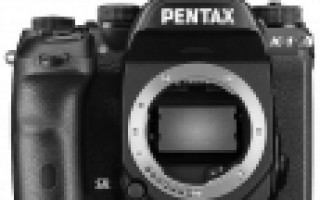DSLR for the professional photographer
15 Best DSLR Cameras


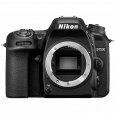
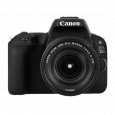
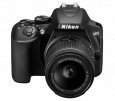
According to the Japan BCN Award, the modern market of SLR cameras is not just occupied by Japanese manufacturers, but has actually turned into a battlefield of titans - Canon with 61.1% of the market and Nikon with 34.4% have essentially divided it, the share of cameras from the same Sony , which recently had high hopes for their launch in the DSLR segment, is scanty. Yes, whatever one may say, during the invasion of mirrorless system cameras only the recognized giants of the genre remain afloat.
Even though in recent years there have been more and more shouts that “DSLRs” are outdated, and modern mirrorless cameras completely cover their capabilities despite their obvious advantages, this market segment is not going to die. Moreover, we are talking not only about the professional segment, where at least inertia means a lot: you must agree, having accumulated more than one lens, say, the Canon EF “L” series, no one will switch to a mirrorless camera with a different mount - and that’s why Canon continues maintain the championship in photojournalism with his “five” and “one” to this day. A certain decline in the DSLR camera market was largely due to the amateur segment - those who just want to “take a beautiful photo” have enough not only mirrorless cameras, but also more or less decent smartphones.
However, whatever one may say, even for an amateur, SLR cameras provide serious advantages: for example, the ability to use a huge number of lenses from the secondary market, including even Soviet ones with an inexpensive adapter - this is important in conditions of a limited budget. The same Canon EOS will allow you to acquire a high-aperture “portrait” lens extremely cheaply (“Helios-44” still has a lot left, and we haven’t even mentioned the old Japanese “glasses” from Ebay), but replacing whale glass with a system UPC will already cost a significant amount . Well, we won’t even talk about “digital point-and-shoot cameras” with non-replaceable optics, and especially camera phones.
However, given the obvious migration of the main demand to the semi- and professional segment, we will change the conditions for selecting SLR cameras compared to the previous version of the rating, concentrating on the seriousness of the camera’s capabilities - if you’re going to buy a “DSLR”, it’s definitely not for “playing around, exposing” on Avito and return to your smartphone.”
The tendency of many functions to “flow” from the professional segment to the amateur segment fairly confuses the classification of cameras by user groups. But when creating the TOP 15 SLR cameras, you cannot do without their classification.
Let's agree on terms
- Professional SLR cameras are, first of all, not even about the quality of the matrix and the abundance of settings, not about dust and moisture protection, but about a resource. When the number of shots taken per day approaches four figures, it is the resource that becomes most important: imagine a shutter failure during an important report. Unpleasant? That's it.
- The semi-professional segment is, in fact, simplified “pro” cameras, often retaining a considerable part of the “hardware” from older models. In general, in skillful hands the difference will be small, except that semi-professional cameras do not have a “machine-gun” burst shooting speed, and the shutter resource is shorter.
- The amateur segment of SLR cameras has long been divided into two by both manufacturers and the regulations of world awards: “for beginners” and “for advanced enthusiasts” . The first one, frankly speaking, is boring: maximum reduction in price (down to plastic mounts), minimum settings, but a lot of auto modes. But “advanced amateur” SLR cameras are quite interesting: they have more opportunities for creative work and a higher resource. Well, after installing resident programs like Magic Lantern, they also acquire functionality familiar to the semi-professional segment: in conditions of a limited budget, such a DSLR may already be of interest.
Rating of the best SLR cameras of 2018 - early 2019
| Category | Place | Name | Rating | Price |
|---|---|---|---|---|
| Best DSLR Cameras for Beginners | 1 | Nikon D3500 Kit | 9.8 / 10 | 25 370 |
| 2 | Nikon D5300 Kit | 9.6 / 10 | 32 490 | |
| 3 | Canon EOS 2000D | 9.3 / 10 | 23 080 | |
| 4 | Canon EOS 1300D Kit | 9.2 / 10 | 20 200 | |
| The best DSLR cameras of the “advanced amateur” level | 1 | Canon EOS 800D Kit | 9.7 / 10 | 39 750 |
| 2 | Nikon D5600 Kit | 9.6 / 10 | 35 099 | |
| 3 | Canon EOS 200D Kit | 9.3 / 10 | 34 973 | |
| The best semi-professional DSLR cameras | 1 | Canon EOS 6D Mark II Body | 9.8 / 10 | 85 900 |
| 2 | Nikon D610 Body | 9.7 / 10 | 57 690 | |
| 3 | Canon EOS 6D Body | 9.7 / 10 | 58 840 | |
| 4 | Nikon D7500 Body | 9.6 / 10 | 52 950 | |
| 5 | Sony Alpha ILCA-77M2 Body | 9.5 / 10 | 81 000 | |
| The best professional DSLR cameras | 1 | Canon EOS 1D X Mark II Body | 10 / 10 | 278 690 |
| 2 | Nikon D5 Body | 9.9 / 10 | 321 990 | |
| 3 | Canon EOS 5D Mark IV Body | 9.8 / 10 | 133 290 | |
| 4 | Canon EOS 5DSR Body | 9.7 / 10 | 117 990 | |
| 5 | Pentax K-1 Body | 9.5 / 10 | 109 998 |
Best DSLR Cameras for Beginners
The camera, which won the TIPA Awards Best DSLR Camera award in 2019, at the very least, at a price per kit, still fits into the framework adequate for Russian understanding, although, of course, with an eye on great opportunities, someone with such an amount will go for the secondary market. By the way, there are as many as seven whale options: we won’t tediously list them, but we note that, in addition to the classic 18-55 or 18-140 zooms for cropped cameras, you can take a DSLR with a portrait high-aperture “thirty-five”, and with a very specific telephoto 70 -300.
The camera inherited a lot from the previous D3400 model. First of all, this is the same 24 “megadot” matrix, which, in general, allows you to confidently print on A3 format and even more (if you try), 11-point autofocus and the ability to shoot FullHD video at 60 fps - so you You will be able to join the cohort of photographers and, God forbid, video bloggers. However, there are serious changes in ergonomics - less weight, a completely different shape of the handle, a different arrangement of buttons (by the way, much more convenient and similar to Canon, hehe) and - lo and behold! – fewer auto modes! Well, the latter for a good SLR camera for a novice photographer is not a fact that it’s a plus, it’s rather the personal opinion of the author, who would be happy to leave only aperture priority, shutter priority and “manual” on the selector. However, “creative effects” like selective color removal were left in - if you don’t want to master Lightroom and Photoshop, but are just going to snap frames into an on-camera JPEG, they will come in handy. Are you into street photography? Well, the camera turns on quickly, and your finger immediately hits the shutter button, located just inside the switch.
Another change compared to its predecessor is twice the autonomy, and on exactly the same battery. So you don’t have to think too much about buying spare batteries or even a battery handle: you’ll have to try very hard to drain the battery, even if you constantly use Live View and synchronization with your smartphone.
Do you need a professional camera to become a photographer?
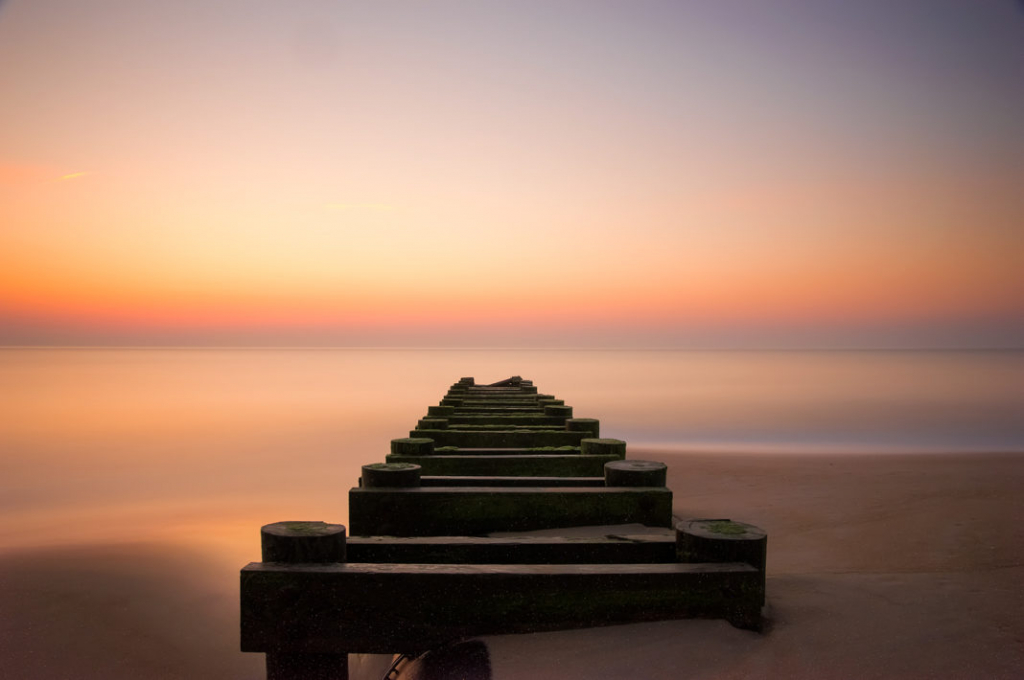
Have you ever heard someone say, “My photographs would be much better if I had the same camera as you or that photographer”? You may have even said something similar yourself. But is there any truth in this phrase? Or are people just wishful thinking and thus showing their ignorance?
Will a professional camera really make an amateur a better photographer? Will your footage become truly outstanding in an instant? Sorry, but no. In fact, the camera is not fundamental to developing professional photography skills.
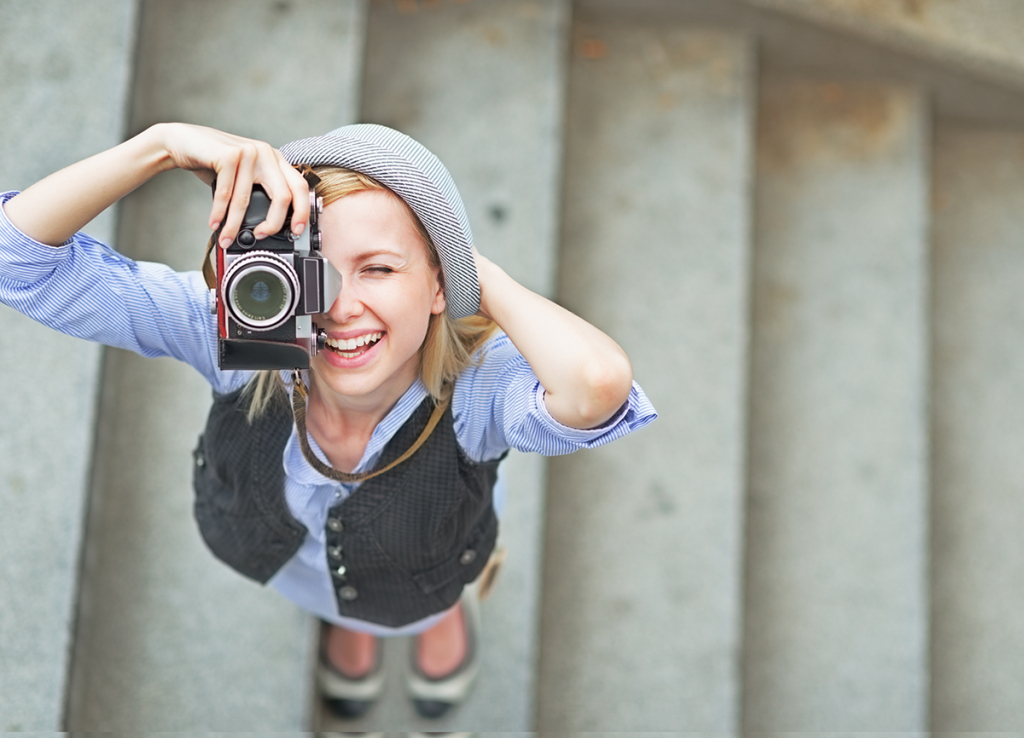
Before anyone now points out that such a statement sounds too biased from the lips of photographers who themselves use cameras and lenses of the highest quality, we note that they did not always have the same professional equipment. Most photographers began their creative journey with a simple compact camera.
The price of your gear does not define you as a photographer; Note that you can take excellent, professional-looking images even with a budget DSLR.
The camera does not identify a professional photographer
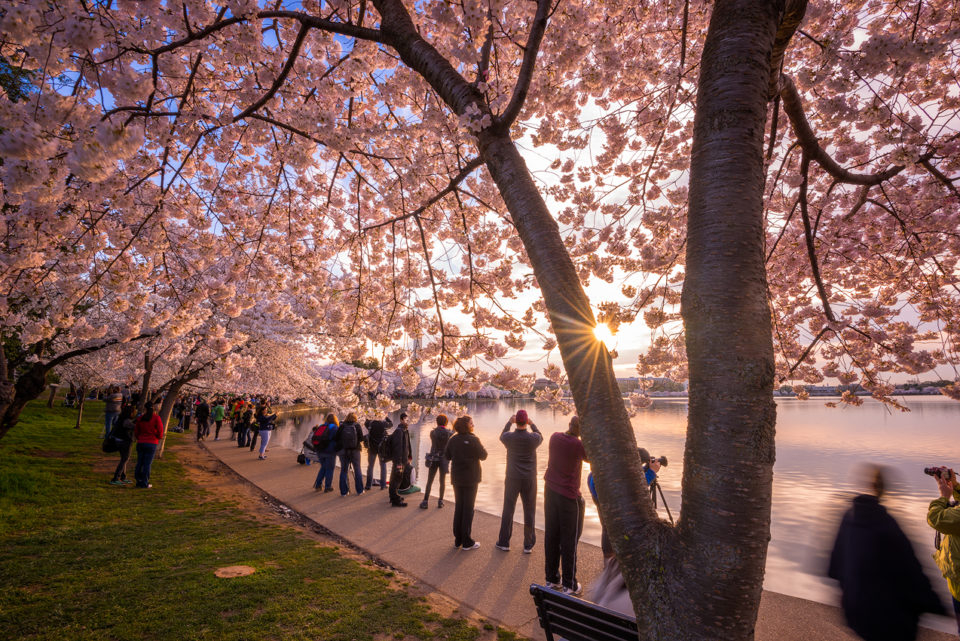
An example from life. Sunrise at the Tidal Basin in Washington, DC. As the sun begins to rise above the horizon, serene cherry pink trees rise above the hectic city. There are hundreds, if not thousands of tourists and photographers around. One of them is a guy with a $4,000 camera, a $2,000 lens, and a great tripod. After a few minutes, he looks at another photographer's display and asks what settings he's using. In response, it receives the values of aperture, ISO and shutter speed. Now he's trying the same settings on his camera.
Meanwhile, the second photographer uses a 6-stop ND filter to achieve a long exposure, unlike the first. So what happens when he uses a 30 second shutter speed? The image becomes completely white. He is not a bad photographer, but it is surprising that a person, having such an expensive camera, does not know how to use it.
Having an expensive professional camera does not guarantee that its owner is more professional than someone with an entry-level camera. The camera does not determine the photographer’s weight—you need to know this a priori. Experienced photographers can get good images with the equipment they have because they know how to use it (!) and, most importantly, they understand the basics of photography.
Learn the basics of the art of photography
The biggest favor you can do to yourself as a new photographer is to master the basics first. Learn how ISO, shutter speed, and aperture work together. Read on to learn about photography composition and techniques to help you create more attractive photos.
Why then do professional photographers have professional equipment?
If gear really isn't that important, then why do most professional photographers use expensive, high-quality tools for their work? Isn't this a little contradictory?
It goes without saying; A $4,000 camera is more productive than a $400 camera, and a $2,000 lens is better than a $200 lens. However, expensive equipment will not allow you to take better pictures if you do not know how to use it and have minimal knowledge of photography. However, it will create higher quality image files from the photos you take.
With improved dynamic range, more megapixels, and larger sensors, top cameras produce larger, higher-quality files that you can fine-tune in post-production without sacrificing image quality.
Because the files are much larger, you can also print larger sizes. Setting high ISO values will prevent unsightly grain when shooting at night in landscape photography, for example, etc.
As you study photography as a science and your ambitions grow, you will feel the need to upgrade to professional quality photography equipment, not because it will make your photos better, but because you will be able to improve the technical quality of your files.
If you don't want to go any further than publishing images online, you don't need to buy the most expensive equipment. You won't see much difference between an entry-level camera and a professional camera in a smaller, web-optimized .jpg file.
Examples with an entry-level camera
Below are photos by photographer Christian Holberg that he once took with an entry-level DSLR camera with a kit lens. The photographer is pleased with these shots to this day - they would not look any different if he had taken them with the more professional equipment that he now has.
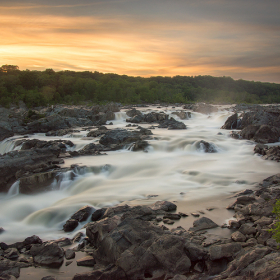
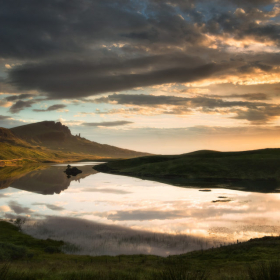
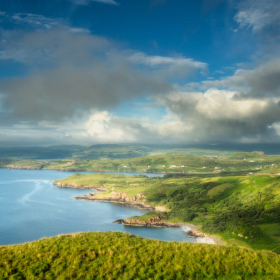
Photogora video channel
The main problem of a beginner in photography: which camera to choose?
If you suddenly become infected with a thirst for photography and seriously decide to take up photography, of course, you will need a camera for beginners!

A universal answer to the question “Which camera should a beginner choose?” does not exist.
It is a fact. It all depends on each individual person. There are as many reasons to recommend a particular camera model as there are cameras themselves. Today there are about 85 camera and accessory manufacturing companies in the world. And each camera has both its own characteristics and functions that are not so easy for a novice photographer to understand. Digital cameras dominate analogue ones, but figuring out what DSLR, MFT, full frame, cropped frame, megapixels, noise reduction, EVF, OVF, ISO and so on means is not at all easy! We suggest you figure out what is right for you.
Decisive factor

Awareness is key when choosing a camera! But we're talking about a novice photographer trying to figure out which camera is better than the rest, what does awareness have to do with it?
Let us explain: Which of the now famous photographers has not been in this situation: at one time everyone liked to take pictures with a regular point-and-shoot camera, but at some point we all understand that the time has come to purchase the first “adult” DSLR. And finally, you will be able to click cats without fear that the photo will turn out dark or blurry. Of course, we have no idea what we need and rush out to buy the most beautiful, flashy and intricate camera.
But our advice: find a photographer among your friends who can help you with your choice. It is much easier to follow the recommendations of a professional who can answer all your questions. Especially if you decide to buy a camera from the same manufacturer that your teacher chose. As a beginner, you will have to understand a lot of technical characteristics, such as the “exposure triangle” - shutter speed, aperture and ISO. And it will be much easier to do this if you and your teacher have the same cameras.
DSLR or Mirrorless (MFT)?

When you decided to buy a “real” camera, you were probably sure that it would be a DSLR or a digital SLR camera. These cameras get their name from the small mirror that clicks inside the camera every time you press a button. Many professional photographers around the world use DSLR cameras. But what will definitely surprise you once you start exploring the world of cameras is the growing popularity of mirrorless cameras (MFT). A few years ago, there was no such choice, but today mirrorless cameras are serious cameras in the usual point-and-shoot body. These cameras can be a great choice, but it's always important to make sure your teacher is familiar with them. This is the only way he can really help you decide. Mirrorless cameras have both many advantages and a number of disadvantages. It's important to know and understand them, but more importantly, these cameras don't have as many maintenance services as DSLRs. If you want to know more about the difference between DSLR and mirrorless cameras, read our review on the topic.
Crop or full frame sensor?

If you are sure that a DSLR is your choice, then the next step you should think about is crop (truncated) or full-frame sensor. There are a few important technical details that I could go on and on about, but in a nutshell, a crop sensor is smaller than a full frame sensor, so less light and less data hits the crop sensor when you take a photo. The price of cameras with crop sensors and full-frame sensors is very different, since crop sensors are most often used in cameras with cheaper components, while full-frame sensors are found in weather- and dust-resistant cameras.
But the differences are not only in price: lenses designed for cropped ones cannot be used with full-frame cameras. If you own a full-frame camera, then you will only need to buy full-frame lenses designed for it. They are much more expensive, but also better quality than lenses made for crop sensors. On the other hand, cameras with a crop matrix can freely use full-frame lenses.
After reading this description, you must be thinking that if you can afford a full frame camera, then the choice is made. However, even if your budget allows for a full-frame camera, there is a pretty good reason to start with a crop camera. With a crop sensor, it is easier to see the depth of field in the viewfinder and be sure that all or part of the photo is in focus. Of course, the most significant thing that will help you make a decision on a difficult issue is your budget.
If your budget allows you to buy a full-frame camera and a pair of matching lenses, go for it. If not, cropped cameras and lenses can still produce professional results and are a great way to learn photography on a budget.
Canon or Nikon?

Obviously, when choosing your first camera, you can't make a “bad” choice. MFT or DSLR, full frame or crop; If you invest more than the average cost of a point-and-shoot camera, you'll certainly get everything you need to explore the “exposure triangle” we talked about above. You can choose a camera from another manufacturer, but today it is best to start a photography career with a camera from Canon or Nikon. They make it easier to find information or photography tutorials about them, and they also have a wide range of lenses available. It will be easier to understand what you want from your photography once you understand your camera settings.
You can take great pictures with any camera manufacturer, but unfortunately the cameras cannot be combined. Simply put, you cannot use a Canon lens on a Nikon or vice versa. That being said, this is not an issue in the mirrorless camera market, where lenses are freely compatible between different manufacturers. But even so, you need to be careful with this when deciding which lens to choose.
As we have already noted, the most important factor is to follow the advice of a professional step by step. For example, if you both have a Canon camera, you can borrow lenses later. If you go on a plein air shoot together, your mentor will probably let you test one of his lenses and also give you some useful tips.
There are universal terms, but camera manufacturers often call the same things differently. Therefore, when your mentor uses terms, it will be much easier for you to understand if the cameras are from the same manufacturer.
When it comes down to it, there are two main differences between Canon and Nikon:
- Now Nikon cameras are equipped with higher quality matrices.
- Canon leads in speed - focusing and frames per second.
But, in any case, no matter where you start, everything is better than a soapbox.
Used cameras
If your budget does not allow you to choose a new camera, you can turn to used options. And this is another reason to pay attention to the top brands Canon and Nikon. Many photographers quickly improve and, as a result, change their equipment to a new one. The more professional the photographer, the better, as a rule, he takes care of his equipment. So a lot of what you can buy second hand is in excellent condition. Of course, remember to test such techniques and it is best to do this with the assistance of your teacher. He will know exactly what to look at and how not to end up with a camera with unclear focus, dusty glass, a crippled matrix, and so on.
Well, if there is no one to help, you can always contact the Thrift Store of the Fotosklad store.
Results

The last piece of advice that can be given to a beginner is to carefully monitor and care for your first camera so that it lasts as long as possible and really helps you learn how to take high-quality and impressive photographs.
Which camera is best for a beginner photographer to buy at the initial stage?
Welcome again to my blog! I’m in touch with you, Timur Mustaev. I receive a lot of letters with the same phrase: “Recommend an inexpensive and good camera,” so I decided to write this article.
It is possible that you are good at taking pictures with a phone or other point-and-shoot camera, have your own blog with your pictures, but at some point you decided to get better at photography in order to get high-quality and clearer pictures. What will you do? Of course, you will want to buy a more sophisticated camera.
Today I will review the camera ranges and tell you which camera is best to buy for a novice photographer! Let's begin!
First, decide how far you want to go as a photographer. Do you just want to do amateur photography or do you want to develop and conduct photo shoots and shoot events? Once you make your final decision, you need to start choosing a camera.
Three types of cameras, their advantages and disadvantages
There are three types of cameras:
- Soap dishes;
- Mirrorless with removable optics;
- Mirrored.

Advantages of soap dishes:
- Light weight and size;
- Automatic shooting only. No photography skills required;
- Low price.
Disadvantages of soap dishes:
- Lack of ability to control frame construction;
- Lack of interchangeable lens;
- No manual mode.
Advantages of DSLR cameras:
- The ability to take high-quality photos under any conditions;
- Availability of a high-quality matrix;
- Availability of manual settings;
- Replaceable optics.
Flaws:
- Large weight and size - sometimes more than 1 kg;
- Expensive. The price starts from 30 thousand rubles.

The main difference between a mirrorless camera and a DSLR
I want to separately review the main difference between mirrorless cameras and SLR cameras, which is the type of viewfinder. If for SLR cameras it is optical, then for hybrid cameras it is display (electronic).
Let's look at the advantages of each viewfinder. It’s worth noting right away that the disadvantages of these two types of cameras will be mutually inverse.
Advantages of the electronic viewfinder:
- Low price with good technical parameters;
- Larger image;
- A camera with this type has smaller dimensions;
- The ability to take photographs in any position of the camera: looking in front of you, lowering it below or raising it above your head;
- The shutter release is less audible because there is no working mirror.

Advantages of an optical viewfinder:
- Natural colors in the viewfinder;
- Autofocus is more correct and faster;
- In difficult conditions, for example, in bright sunshine, the image remains clearly visible and clear;
- Low heating of the matrix, which allows you to detail the image, taking into account only small digital noise;
- Turning off the display will help extend battery life.
I note that there are cameras with dual viewfinders. All cameras have an optical viewfinder, but only some models also have a display viewfinder, which helps you shoot in any position.
If you are determined to gradually further develop in photography and take breathtaking photographs, then you are in the mood for purchasing SLR photographic equipment.

Types of SLR photographic equipment
Let's look at three categories of SLR cameras and the main top model ranges. From top to bottom, we will look at the smaller models and move on to the more sophisticated ones in the Nikon and Canon lineups. I would like to note that while writing this article, I came across many real reviews from friends about each of these cameras!
Budget amateur camera
- Nikon D3100 is an ordinary amateur DSLR for family photography. The main disadvantage is that many functions are transferred to the on-screen menu, which makes work difficult.
- Nikon D5100 is a DSLR with advanced functionality. It is suitable for those who have experience in photography and their own requirements for the functionality of photographic equipment.
- Nikon D7100 is a more advanced technology. I think that it is the protected body, 2 slots for memory cards and high-speed shooting of 6 frames/sec that make this model and others like it quite cool equipment.
- Canon EOS 1000D is a simple camera with a small screen and a 12 MP sensor.
- Canon EOS 600D . It features a rotating screen and Full HD video recording.
- Canon EOS 650D . Has 9 AF points and 5 fps.

Advanced amateur camera
- Nikon D610 – photo detail at ISO up to 3200 units, comfortable body and quiet shooting mode.
- The Canon EOS 6D has built-in Wi-Fi and enhanced creativity.
- Canon EOS 7D – wide 100% viewfinder coverage, 19 focus points, maximum shutter speed 1/8000s.

Professional camera
- Nikon D810 – for photography, 39 point autofocus system, sharper shooting and pictures can be edited without losing quality.
- Canon EOS 5D mark III - mainly intended for videographers, 61-point autofocus system, good color rendition.

Of course, it's worth remembering that your choice largely depends on your budget. It is worth noting that if you shot on a Canon point-and-shoot camera, then you should give preference to this brand when buying a SLR camera.
The lens plays an important role when choosing!
I want to point out the main feature! If you opt for the expensive Nikon D810 with a kit lens, then the quality of the photos will not be as excellent as you would like! You can find out which lenses are in demand for Nikons in the article.
Why should beginners not buy expensive photographic equipment right away?
- The advantages of the camera, which will be used in everyday photography by only 1%, raise the cost of the camera above 50%;
- If you have not mastered simple skills and terms in photography, then there is no point in buying expensive equipment so as not to understand it at all;
- A novice photographer will not be able to tell the difference in images taken with different lenses of the same model;
- Without shooting about 20 thousand frames, you will not have any shooting requirements, and why pay more?
- Having bought expensive photographic equipment, you need to remember that all the auxiliary accessories will cost a lot of money;
- Remember! The main thing is not the photographic equipment, but the photographer and his ideas!
Which is better: Canon or Nikon?

Canon and Nikon are top manufacturers of photographic equipment and have been competing for the title of best brand for several years now. It is impossible to compare the advantages and disadvantages of each company objectively, since both manufacturers have their pros and cons in one area or another. Still, I want to conduct a review and find out the disadvantages and advantages of both brands of cameras. So, Nikon or Canon?
Canon Features:
- With the same quality of accessories, Canon's photographic equipment remains 10% cheaper than its competitor's;
- Shooting video – Canon still has the advantage;
Nikon Features:
- Ability to shoot in low light and get excellent images with little loss of quality;
- Autofocus! Nikon focuses faster and better and has a superior number of focus points compared to its competitor. For Canon, this point can become a real problem and even a forced transition to manual shooting.
I wrote in more detail about which camera to choose Nikon or Canon in one of my articles, you can read it.

Author's opinion
In my practice, I have taken photographs with both Nikon and Canon DSLRs. And I’ll tell you one thing, any DSLR, of one brand or another, behaves with dignity in the right hands, and that’s a fact!
Advice . Start with a budget amateur camera, let it be, for example, Nikon D3100 or the more advanced Nikon D7100, but do not go further, even if your budget allows it. Take it with a kit lens, it’s always more profitable!
And finally, my dear readers, as I advise my best friends, be sure to check out the video course “Digital SLR for a beginner 2.0” (for those with NIKON) or “My first SLR” (for those with CANON). These are excellent courses that will help in your endeavors and set you on the right path as a photographer. They will open your eyes to the many secrets that a SLR camera holds. These are the courses that professional photographers recommend as initial development.
My first SLR - for lovers of CANON SLR cameras.

Digital SLR for beginners 2.0 - for lovers of NIKON SLR cameras.

With this, I bid you farewell and wish you a good choice of an inexpensive camera with brilliant features that will easily turn all your ideas into reality.
Don’t forget to share this review with your friends on social networks and, of course, subscribe to further new articles on my blog. Let's reveal all the main secrets of photography!
Fashion photographer equipment: what Jaroslav Monchak cannot work without.
Having worked with Canon full-frame mirrorless and DSLR cameras, fashion photographer and Canon Ambassador Jaroslav Monczak knows the benefits of both types and is willing to share which gear he loves best. Not only does he use different cameras, but he often chooses something other than a traditional 50mm lens.
Yaroslav has been working in the fashion world for 10 years, but with the release of the Canon EOS R full-frame mirrorless camera, his workflow has undergone some changes. For more creative photo shoots, Yaroslav prefers to use the EOS R. At the same time, for work on commercial projects, he chooses the Canon EOS 5DS R camera. This approach allows him to easily create high-quality images, regardless of the type of work being performed. “Canon's full-frame mirrorless cameras deliver fast autofocus and superior performance in such a compact body. This is a real revolution,” says Yaroslav.
Do you have Canon equipment?
Register your equipment and get access to free expert advice, equipment servicing, exciting events and special offers - join Canon Professional Services
Yaroslav is a member of the Ukrainian Association of Professional Photographers and represents Ukraine in the international photographic community, so it is very important that he can create photographs of the highest level in both natural and studio lighting conditions. “Lighting is the most important factor for me,” he says. “I enjoy working with both natural and studio light, but I try not to mix different types of lighting.”
This means that the optical quality of its lenses must match the high resolution and wide dynamic range of its cameras. Yaroslav is also the founder of the Lighthouse photography school and must independently try new products in the photo industry in order to share all the latest information with students.
Let's see what equipment Yaroslav uses in the field of fashion photography, and find out which cameras and lenses he likes the most.
Canon EOS R
30.3 MP full-frame sensor with impressive levels of detail, high ISO sensitivity and Dual Pixel CMOS AF technology. Compatible with new RF lenses, the Canon EOS R takes storytelling to a whole new level.
1. Canon EOS R
“I usually use the Canon EOS R for personal photo shoots, where I have a little more creative freedom,” says Yaroslav. — First of all, I demand from a camera decent color rendition and the ability to accurately convey the light qualities of the scene. Canon equipment has always been great at handling these tasks, and the Canon EOS R is no exception. The colors in the photographs look realistic even without post-processing.”
Yaroslav also notes that despite the much lower importance of ergonomics compared to image quality and color rendition, convenience when working with the camera allows you not to be distracted from the process for a longer time.
After Yaroslav switched to a full-frame mirrorless camera with an electronic viewfinder, it took him very little time to master the new camera. “The EVF has a slight delay in displaying the image compared to optical viewfinders,” says Yaroslav, “but the benefit of the EVF is that you can immediately see the dynamic range that will be captured at the press of a button. So what you see is exactly what you get.”
Canon EOS 5DS R
A DSLR camera built to deliver stunning image quality, with 50.6MP resolution and low-pass filter suppression for maximum camera sensor sharpness.
2. Canon EOS 5DS R
Mirrorless cameras are growing in popularity, but DSLRs are definitely here to stay. Many photographers, including Yaroslav, still use these cameras for commercial projects. “For commercial work, I still prefer to use the Canon EOS 5DS R for its incredible resolution,” he says.
The Canon EOS 5DS R has an impressive 50.6 megapixel image sensor that captures stunning levels of detail. “My clients from the commercial sector demand high quality images, because often these pictures end up on billboards or banners,” continues Yaroslav. “That's why I choose the Canon EOS 5DS R for these types of tasks. I also find that the Canon EOS 5DS R has impressive dynamic range, which allows me to reveal details in post-production that would otherwise be impossible to achieve.”
Image sensors with limited dynamic range can result in loss of data in dark or light areas, making the photographer's job more difficult and leaving no room for error. However, the Canon EOS 5DS R's wide dynamic range allows Yaroslav to enhance images captured in natural light. For example, soft light falling through a window, which is ideal for portraits, very quickly loses its brightness. If objects are located some distance from the window, the light level may be significantly lower. Thanks to the ability to preserve detail in some dark areas, Yaroslav is able to create fashion portraits in natural light without the use of light modifiers such as reflectors, as well as lamps and other studio light sources.
Canon RF 50mm F1.2L USM
This stunning RF lens sets new standards in photographic quality, delivering superior sharpness, a range of creative features and low-light performance.
3. Canon RF 50mm F1.2L USM
Like many other portrait and fashion photographers, Yaroslav has been using 50mm lenses for many years, usually prime lenses. He started working with the Canon EF 50mm f/1.4 USM and used it for several years in combination with the Canon EF 85mm f/1.8 USM lens, which gave him new possibilities and a tighter perspective. Yaroslav bought the Canon RF 50mm F1.2L USM lens immediately after this model appeared on the market, as he was impressed by the optical quality and maximum aperture.
“It delivers fantastic clarity across the entire frame, and this is especially noticeable with the Canon EOS R, a combination I really like,” he says. “To create high-quality fashion photographs, I need to be sure that the photos are sharp and clear where they need to be, and this lens delivers that level of quality.” In my opinion, it is ideal for working with both natural and studio lighting.”
Thanks to exceptional sharpness at the edges of the frame, Yaroslav can position his subjects anywhere in the frame and be confident of decent focus and consistently high definition. And the maximum aperture of f/1.2 also allows it to work effectively even in low light.
Top 10 Best DSLR Cameras for Beginners

If you love taking photos, but the capabilities of your smartphone are no longer enough, it’s time to think about buying a good DSLR. However, there are a huge number of models on the market. How not to get lost and confused when choosing the best solution for yourself? The answer to this question lies in our selection. In it you will find the answer to which DSLR is the best for a beginning photographer and why.
#10 – Canon EOS 1200D Kit
Price: 22,490 rubles

Our top DSLR for amateurs opens with the popular budget model Canon EOS 1200D Kit. The model is famous for its ergonomics and special rubberized inserts, thanks to which the device is securely fixed in the hands of the photographer.
The technological equipment of the model is also at the highest level - a high-quality 18.7-megapixel matrix made using APS-C technology is complemented by a wide range of modes, including intelligent ones, so a beginner does not have to manually select settings.
The camera interface is extremely simple and intuitive; even a person who has never held a camera before can understand it.
There are no special complaints about the build quality of the case - there is no play or squeaks during operation, this is confirmed by numerous laudatory reviews from users. Disadvantages include the appearance of noise when shooting in poor lighting conditions.
#9 – Canon EOS 4000D Kit
Price: 20,790 rubles

The Canon EOS 4000D Kit is definitely one of the most inexpensive, but at the same time good DSLRs, with which it is best for a beginner to start their journey into the world of photography.
The advantages of the model include its ergonomics, work with external flashes, the ability to take spectacular portrait shots and macro photography. True, photographs of the latter type require separate optics.
Compactness is also an important argument in favor of buying this cheap DSLR. It weighs only 436 grams and has a high grip comfort - so the camera will fit comfortably in both a miniature female hand and a powerful male palm.
When installing a standard lens, the weight increases and slightly exceeds 500 grams, but even so the EOS 4000D Kit does not burden your pocket or neck. All of the above advantages are complemented by good autonomy - the camera can work for about a day on one charge.
#8 – Nikon D3200 Kit
Price: 30,000 rubles
If you don’t know how to choose a camera with which you won’t have to struggle for a long time to take high-quality photos, then the Nikon D3200 Kit is what you need.
Just turn on automatic mode and the camera will automatically select the optimal parameters for the photo. With the help of a 24.7-megapixel matrix and special EXPEED 3 image processing technology, photos will have natural color reproduction and abound in rich colors.
Beginners will be able to get high-quality results from the very first shots, since the D3200 Kit has a wide range of pre-installed samples and detailed instructions.
The advantages of the model include its compactness - so you can take the device with you on vacation and not worry about it taking up a lot of space in your backpack.
The camera has no significant disadvantages, but in some modes autofocus takes quite a long time, and shooting in the dark will require certain knowledge that a beginner may not have.
#7 – Nikon D3400 Kit
Price: 28,490 rubles

The Nikon D3400 Kit is definitely worth recommending to all people planning to take the device with them on a trip. This is supported by the ability to synchronize the camera and smartphone via Bluetooth technology - thanks to this you can upload photos without waiting for you to return home.
The combination of a 1200 mAh battery and economical consumption allows you to take up to 1200 pictures on a single charge.
The model is equipped with an AF mode that keeps the subject in focus until the photo is taken. This will be useful for anyone who photographs sporting events or moving objects.
If you think that the photos on the D3400 Kit are too contrasty, you can always turn on the “Active D-Lighting” function. You also don't have to worry about sensor contamination, since the Capture NX-D application will automatically start the cleaning system at the right time.
#6 – Nikon D5100 Kit
Price: 20,000 rubles

The Nikon D5100 Kit is the optimal camera for a photographer who no longer has enough functionality of amateur devices, but also doesn’t need an expensive professional camera.
The model is aimed at those photographers who like to experiment. It offers the owner ample opportunities to realize creative ideas, ranging from simple portraits to complex landscapes and studio photography.
The main advantages of the D5100 Kit definitely include the 16-megapixel matrix and the EXPEED 2 processor, which is responsible for processing photos. This set is quite sufficient for any user who expects detailed, high-definition photos from his tool.
#5 – Canon EOS 2000D Kit
Price: 27,490 rubles

Canon EOS 2000D Kit is rightfully considered one of the best DSLRs for beginners. The model weighs 475 grams, which makes it easy to carry in any backpack, an excellent combination of price and quality, and an extremely clear interface.
The EOS 2000D Kit supports Wi-Fi and NFC, so photos can be transferred to your smartphone instantly. With these technologies, you can control the camera remotely, so taking group photos will be very easy.
As for the quality of photographs, there are no problems with this either. The images have a wide dynamic range and high detail. In order to achieve the best result, you don’t have to spend hours racking your brain over the settings, since the model has an intelligent scene mode and an automatic creative mode, complemented by pop-up tips.
The engineers didn’t forget about portrait photography. In it, the background is blurred very effectively, and small details of an object in focus are not “eaten up.”
#4 – Nikon D5200 Kit
Price: 35,000 rubles

Nikon D5200 Kit is a compact camera, but at the same time it has a rather convenient body. This solution has long been a signature feature of Nikon products and the company does not intend to abandon it yet.
The model is equipped with a variety of controls, which will be sufficient even for operational shooting, but it is also quite suitable for a beginner, since the automatic modes do an excellent job of selecting the best settings.
The 24-megapixel matrix works great both in proper lighting and in low light conditions. I would also like to mention the noise reduction system, which almost completely removes noise from photographs.
If you purchase good optics for the device, then on a sunny day the pictures will have fantastic detail. However, even without this you can get a decent result, which, coupled with the ease of shooting, is enough for us to confidently recommend the D5200 Kit to absolutely any photographer.
#3 – Canon EOS 700D
Price: 36,000 rubles

We should start listing the advantages of the Canon EOS 700D camera by mentioning the rotating touch-type display. Due to this feature, even beginners will find it convenient to take pictures from awkward positions.
The 18.5-megapixel APS-C sensor is combined with autofocus tracking that is much faster than most more expensive models.
The EOS 700D is also distinguished by its compactness - only 580 grams with batteries. Compared to other models in the segment, the bronze position of our top looks advantageous. The device has no critical flaws, but the fact that the body is made of plastic casts doubt on its durability.
#2 – Nikon D5300 Kit
Price: 37,000 rubles

One of the main advantages of the Nikon D5300 Kit is its fast operating speed with minimal effort from the photographer. Even taking pictures offhand, you can get a high-quality and effective result, but this model is far from the level of pictures taken with professional reportage cameras.
The D5300 Kit is also interesting for its ability to shoot in RAW format. The photos in it are strikingly different from JPEG, and even at ISO 3200 the amount of noise is minimal.
The maximum standard ISO number of a matrix with a crop factor of 1.5 is 3200, but if you like experiments, you can squeeze 25600 out of the camera, although in this case you will have to put up with noise. But there will be no problems with detailing, all thanks to 24.2 million effective pixels.
The camera has a Wi-FI module for quickly transferring photos and a GPS navigator for adding geotags, and the rear display has a variable rotation angle, which will make it easier to shoot from awkward positions. The disadvantages of the model include autofocus not always working correctly and the body getting dirty quickly.
#1 – Canon EOS 750D Kit
Price: 38,950 rubles

The Canon EOS 750D Kit takes first place in our ranking of DSLR cameras. The high price of the model is fully justified by the presence of modern technologies and wide functionality.
When shooting scenes with a flickering light source, uneven illumination is compensated using a special flicker indicator that includes suppression.
There is also a special intelligent shooting mode that automatically selects the optimal settings based on a specific scene.
The EOS 750D Kit has a function called “exposure bracketing”. When you turn it on, you can take a whole set of pictures, and they will differ in their shutter speed. It will be especially useful for photographers who often work in places with difficult lighting and the impossibility of determining the correct exposure.
Photos in portrait mode are effective due to defocusing the background, and effective automatic noise reduction is activated when the shutter speed is longer than one second.
How to choose photographic equipment for product photography
![]()
Very often at the Fair, Craftsmen ask themselves the question: should they photograph the product themselves or contact a photographer? Of course, if you have the means and no time, then it’s easier to hand over the work to a professional. But here the question arises: how to choose a good photographer? How to explain to him that this is exactly how you see your product? What if you want to do everything yourself? There is a solution - learn how to shoot.
The easiest way to learn how to shoot on a point-and-shoot camera and not have any problems is to select the “masterpiece” mode and that’s it, you’re done. Well, what if you want artistry, grace, bokeh and a blurred background? Then this is the place for you to read the article. Right now.
I won’t answer the age-old question better than Nikon or Canon. I shoot on a Nikon D 700, it suits me perfectly, even though the model is outdated by 2017. Why this company? Yes, because “it fell into my hand.” When choosing your first digital SLR camera, remember: even the most beautiful and powerful device will be abandoned if you don’t like how it fits in your hand, how the shutter clicks, or how the control buttons are located. That's why.
It doesn't really matter which company made your camera as long as you feel comfortable using it.
For beginners, I can recommend cameras with a crop factor. These are simple amateur or semi-professional cameras, the matrix of which is 1.5 (for Nikon) or 1.6 (for Canon) times smaller than a traditional film one.

This clearly shows that a larger crop factor means a smaller coverage area. There are many subtleties and nuances that I will not consider now - this is important, but when choosing your first DSLR it is not so important. Over time, you can figure everything out, but now, so that your head doesn’t become swollen from the abundance of new information, I’ll just say: a larger matrix means more data gets to the sensor for processing. And this gives more opportunities for further work.
So, we have dealt with the “carcass” or body, as it is called in stores. But photographers joke that you buy a lens first, and then buy a camera in exchange. And this is largely true.
Which lens should you choose?
First, answer the question - what are we filming? If it’s subject photography, then choose focal lengths close to 100 mm. Why so much? Because at this focal length the shape of the object is better conveyed and distortion disappears. typical for short focal lengths. However, at this distance you will have to move several meters away from your subject, depending on the minimum focusing distance of the lens. But this also allows you to move away from the lighting equipment in order to have more space for a tripod (and manoeuvre). If you want a unique lens that would be suitable for various tasks, then it is worth considering lenses with variable focal length - zoom lenses, for example 18-105. Most often, the device is equipped with this when purchased with a lens, 18-55 or 18-105; such lenses are called “whale”. This nickname doesn't make them good or bad - it's just a base from which you will build. In the future, everyone decides which lenses to buy, and that’s the beauty of interchangeable lenses.
What besides the camera and lens?
Of course, a tripod! For example, this one.

In the first couple of years, the vast majority of photographers use constant light - lamps, daylight from a window. I’ll say it right away, many people write that in product photography the best light is natural. Let me doubt it. The sun can change the intensity of the light flux with incredible speed, changes the direction of illumination, can simply go behind a cloud and that’s it - the photo shoot is cancelled. But with lighting devices there will be no such problems, if you set everything up correctly, you can spend hours drinking tea and arranging, what better way to turn this cup and nothing will happen, just as the man-made sun shone, it will continue to shine. And even through diffusers. And where we need it, and not as it was destined by nature. So if you're learning, master studio lighting, it makes life easier! We'll talk about the layout and lighting later, but for now let this topic remain open.
So why a tripod, you ask? And then so that the cards are clear and light. When using constant light, we will definitely encounter that the shutter speed will be quite decent, if, of course, we want to get frames of the proper quality. What is endurance? Here it is better to read the article about exposure pairs; within the framework of this article I will not go into detail. Or I’ll write a separate explanation if there are any questions.
In addition to the tripod, we will need the light sources mentioned above, for example, table lamps, preferably 3 pieces, but you can get by with 2 if you really want to. What else? Background. Be sure to have white, if you want - black, you will get all the rest as needed.
You can even get a set like this to start with.

But it will require: a level table and long shutter speeds, so if possible, it is better to give preference to pulsed light - flashes. But to work with them you need to have experience, since simple flashes do not show how to set the exposure, and more complex ones cost like a cast-iron bridge. Therefore, first, make friends with lamps to understand how to work with shadow and light.
Summarize
If you want to “shoot the subject,” as photographers say, then get ready, you will need:
- camera;
- lens with focal values of about 70-135;
- tripod;
- lamps with the same temperature;
- a simple white background (you can use whatman paper).
And, of course, you will have to read a lot: camera instructions, forums, books on composition, consider successful examples of photographs that you like. Good luck in this difficult task, and may the expo pair, clean matrix and trouble-free optics be with you!
Examples of a studio at home (from the Internet):


